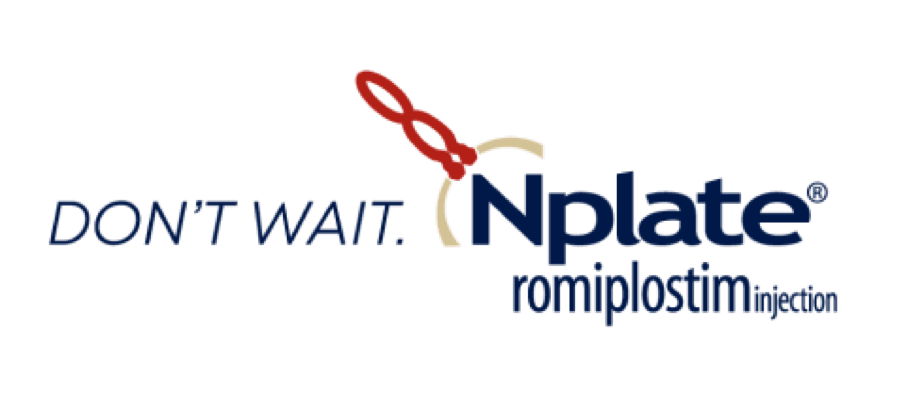References:
1. Lozano ML, Mingot-Castellano ME, Perera MM, et al. Deciphering predictive factors for choice of thrombopoietin receptor agonist, treatment free responses, and thrombotic events in immune thrombocytopenia. Sci Rep. 2019;9(1):16680.
2. Nplate® (romiplostim) prescribing information, Amgen.
3. Newland A, Godeau B, Priego V, et al. Remission and platelet responses with romiplostim in primary immune thrombocytopenia: final results from a phase 2 study. Br J Haematol. 2016;172(2):262-273.
4. Data on file, Amgen; Clinical Study Report 20080435; 2014.
5. Data on file, Amgen; Number of patients treated with Nplate® from launch through to June 2023 Updated; 2023.
6. Data on file, Amgen; Time to Onset, biostatistical analysis; 2019.
7. Neunert C, Terrell DR, Arnold DM, et al. American Society of Hematology 2019 guidelines for immune thrombocytopenia. Blood Adv. 2019;3(23):3829-3866.
8. Rituxan® (rituximab) full Prescribing Information, Genentech.
9. Newland A, Godeau B, Priego V, et al. Remission and platelet responses with romiplostim in primary immune thrombocytopenia: final results from a phase 2 study. Br J Haematol. 2016;172(Suppl):1-4.
10. Kuter DJ, Bussel JB, Newland A, et al. Long-term treatment with romiplostim in patients with chronic immune thrombocytopenia: safety and efficacy. Br J Haematol. 2013;161(3):411-423.
11. Promacta® (eltrombopag) full Prescribing Information, Novartis.
12. Doptelet® (avatrombopag) full Prescribing Information, Sobi.
13. Tavalisse® (fostamatinib disodium hexahydrate) full Prescribing Information, Rigel.
14. Data on file, Amgen; Nplate® IQVIA LAAD 2021 and 2022 OOP Cost Analysis Medicare Commercial Combined ALL; 2023.
15. Data on file, Amgen; Nplate® - coverage from MMIT; 2023.









